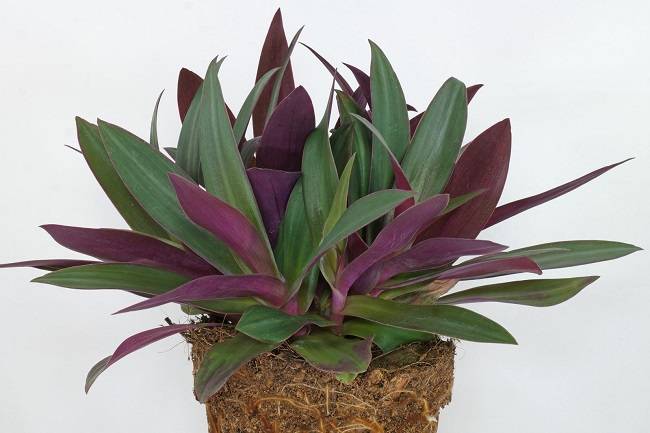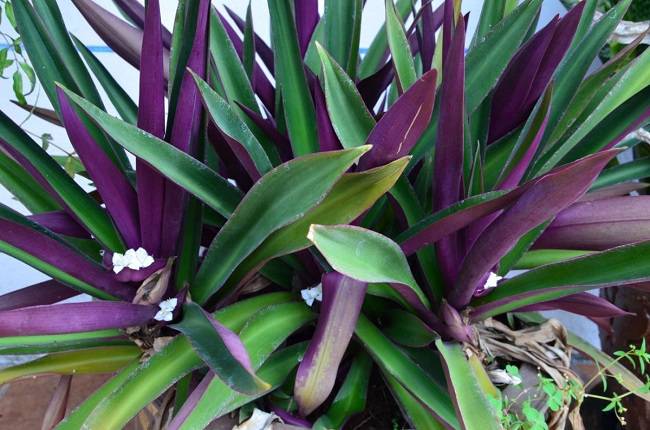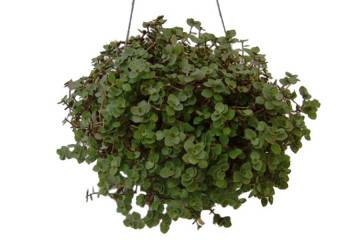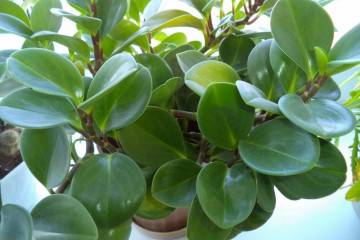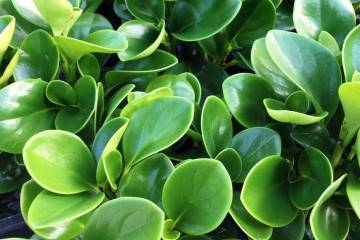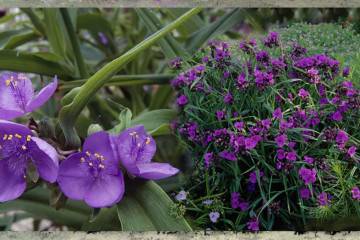Tradescantia reo - home care
Content:
Houseplants have been widely known for a long time. Their main advantage is lush bloom, which you can admire forever. For the home, this is the best decoration. But there are plants, the main feature of which is the leaves. One of these representatives is the Tradescantia Reo.
Description, biological characteristics
Multicolored Tradescantia (tradescantia Spathacea) is a cultivated ornamental deciduous plant that belongs to the Kommelinov family. It has a different name - Tradescantia Coated Reo. Height - about 35 cm. The main difference is linear-lanceolate leaves with a unique purple color. Their length is 35 cm with an average width of 4 cm. Rheo bloom is inconspicuous, characterized by small white flowers.
History of appearance
Rheo, as an ornamental plant, has been known for a long time. Opening old botanical encyclopedias, you can easily find its characteristics. It was brought to Europe several centuries ago, presumably from the territory of Latin America. Now, already forgotten, the plant is gaining popularity again. It is actively grown at home, very often in the form of an ampelous plant.
Homeland of the plant
Tradescantia is native to the Caribbean, where it is found in wild, high humidity rainforests. It also occupies large territories in Mexico and Florida.
Features of home care
Temperature
Tradescantia is a heat-loving southern flower. The optimum temperature is from 20 to 23 ° C. It can withstand a drop to + 13 ° С, but it is desirable that the thermometer does not drop below + 18 ° С.
In the summer, you should take the plant outside. It can even be transplanted into open ground, provided that the place is protected from drafts.
Lighting
Bright diffused light is suitable for the flower. Direct sunlight, as well as lack of lighting, will ruin the decorative appearance of the leaves. The ideal option would be to keep Reo on the south-facing window, covering it with a light curtain. It will create a weak partial shade in which the plant will thrive.
Watering
To maintain the beautiful decorative color of the leaves, the plant needs regular watering. In spring and autumn - 2 times every 7 days. In summer - every day, and in winter - as it dries.
Watering should be done carefully, only at the root. The water must first be defended so that its temperature approaches room temperature, and it becomes softer.
Spraying
Spraying Tradescantia will damage its species and can cause disease. If you really need to increase the humidity of the air, then fine spray nozzles will do. In this case, spraying should be carried out with a sufficient distance.
Humidity
The optimum air humidity is 60%. It is especially important to monitor this in winter, with the beginning of the heating of houses. You can spray the place next to the flower or put a container of water next to it.
If the balance of moisture levels is disturbed, the ends of the foliage begin to dry out.
Priming
Tradescantia Spathacea requires a specially made substrate. To create it, you will need garden soil, sand, peat and humus in a 1: 1 ratio.
Top dressing
Tradescantia Reo is a fast growing plant. The growing season lasts from the first days of spring to the end of summer. For better growth, it needs to be properly fed, every fourteen days. The ideal option is fertilizers for decorative deciduous crops. The dosage is carried out according to the attached instructions. With the arrival of autumn, the frequency decreases, and in winter no fertilization is applied at all.
When and how it blooms
The bloom of Rheo does not attract attention, like other similar representatives. Under the cover of several violet-green bracts, small snow-white lanceolate flowers are hidden. Yellow stamens are visible inside.
In indoor conditions, flowering lasts all year round. This process has no effect on the beauty of the leaves. The flowers last for a short time, then dry up and fall off, giving life to new ones.
Pruning
To preserve the beauty and splendor of the bush, you need to get rid of faded inflorescences. This will prevent seed formation. Due to the fact that Reo blooms all year round, this procedure must be performed constantly.
How does it multiply
Tradescantia Multicolored is a plant that even a beginner can take care of. To propagate a flower, the following methods are suitable.
Reproduction by children (cuttings)
The process looks like this.
- the tops of the shoots or side shoots are cut off;
- the cut pieces are placed in a container with water and a root-forming stimulant is added there. After some time, the root system begins to form;
- the shoot with the root is transplanted into the ground.
Seed propagation
Getting new plants using seeds is also a very effective and common method. Getting seedlings is no different from other plants. Using purchased seeds is ideal. The fact is that quality seed can only be obtained from pure green plants. Hybrid varieties do not provide this opportunity.
For this breeding method:
- prepare peat-sandy substrate. Seeds are sown there;
- covered with foil, watered and ventilated;
- developing at temperatures exceeding + 20 ° C, sprouts appear very quickly;
- grown seedlings are distributed in separate containers.
Plant division
The division of tradescantia is mainly used for ampelous specimens. After all, as they grow, they become too heavy.
To do this, carefully cut the plant into several parts and transplant it into separate containers. Due to its quick adaptation to changing environmental conditions, Reo quickly takes root and is taken into growth.
Transfer
Before carrying out transfer work, it is necessary to create a suitable soil. For this, the same ingredients are used as for planting. If there is not enough free time to make a substrate, then a suitable option can be purchased in a specialized store. A dredge is best suited for Tradescantia or similar crops.
Reo can be transplanted in the third year. Such plants are transplanted every two years. Adult specimens that have reached the age of five are subjected to the procedure every 5 years.
Possible growing problems
Tradescantia is a plant originally native to the wild forests of the tropics. It is quite resistant to diseases and pests. However, some growing problems arise.
Pests
Reo endures the attack of harmful insects calmly, without much damage. A frequent visitor is the scale insect, the larvae of which are the most dangerous.They bite into the stem, sucking the juice. Treatment with insecticides or soap solution will help.
Other problems
The only plant diseases are powdery mildew and gray rot. They arise due to waterlogging. To heal, damaged leaves are removed and watering is restored.
If there are blackening leaves, the problem is bad, too cold water or water with an excess percentage of chlorine. To avoid such a nuisance, it is required to clean it and heat it to 22 ° C.
The leaves are small and curled - a clear sign of a lack of fertilizer or irrigation problems. In this case, you need to change the schedule of moisturizing and feeding.
Tradescantia Reo is an amazing flower. Home care is simple and anyone can handle it. This representative of the plant world has passed the test of time and is loved by many flower growers. The main value lies in the unique color of the leaves. Such a plant can decorate any home.



